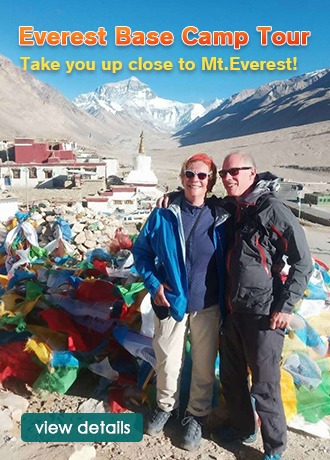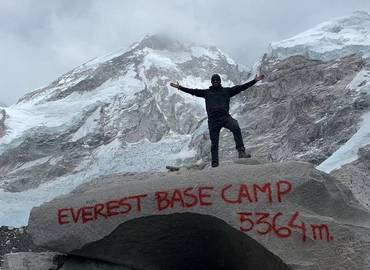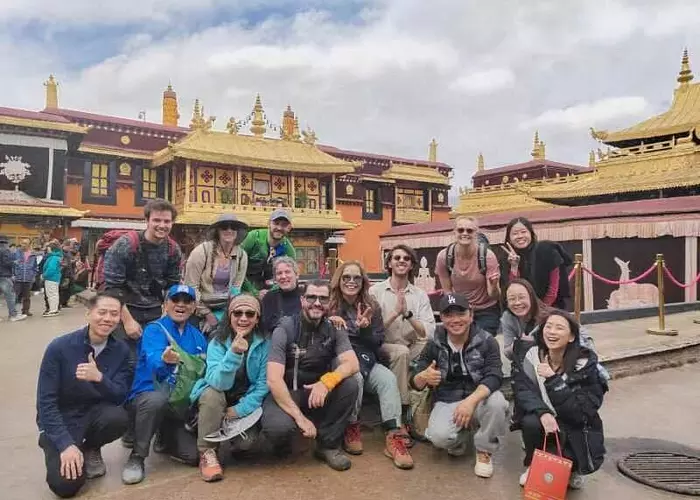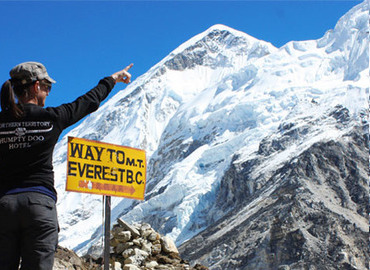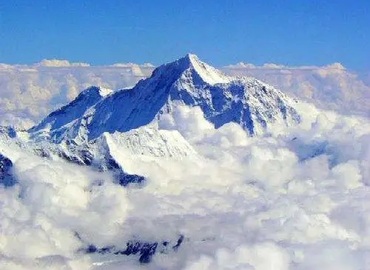Weather and Climate of Everest Base Camp
- Catherine
- Last Updated : 03/24/2023
Mount Everest is known as the world's highest mountain, and the summit of Mount Everest is located in China. A protection zone and a living zone are established around Mount Everest. We generally arrive at the living zone - Everest Base Camp. The base camp is 5,200 meters above sea level and is located in Tingri County, Shigatse. It has a typical plateau and mountain climate, so the weather is complex and changeable, and the natural environment is harsh. Here is a detailed explanation of the weather of Everest Base Camp:
What is the Weather Like at Everest Base Camp?
Low temperature all year round and large temperature difference between day and night.
Due to the special geographical environment of Mount Everest, the altitude of Everest Base Camp is high. The ground is covered with snow all year round, and the temperature is low. There might have sunshine, blizzard, and hailstones in a single day! Check the weather in advance to prepare for it.
| Month | January | February | March | April | May | June |
| Average max. Temperature | -10°C | -6°C | 6°C | 8°C | 13°C | 19°C |
| Average mini. Temperature | -20°C | -16°C | -11°C | -7°C | -5°C | 5°C |
| Month | July | August | September | October | November | December |
| Average max. Temperature | 19°C | 16°C | 15°C | 9°C | 7°C | 2°C |
| Average mini. Temperature | 6°C | 5°C | 1°C | -8°C | -13°C | -17°C |
Spring: Every year from April to May, the base camp is still cold, with temperatures ranging from -10 ° C to 0 ° C, mostly at minus degrees Celsius.
Summer: Every year from May to September, the temperature difference between morning and night is large. The weather is cool and suitable during the daytime, while the temperature returns to winter at night.The temperature difference reaches 20 degrees Celsius in day. The lowest is 5 ℃ but the highest is 23 ℃.
Autumn: Every year from October to November, the temperature difference between morning and evening decreases, but the overall temperature drops, and it is dry and less rainy. The temperature is about 6 ℃ ~ 14 ℃.
Winter: From January to March every year, freezing and snowfall occurs, resulting in a state of high cold. The temperature is roughly -22 ℃ ~ -5 ℃.
Seasonal changes are small and the climate is harsh.
The spring and autumn seasons are transitional seasons and have a shorter duration. April - May is the transition from the windy season to the rainy season; October - November is the transition from the rainy season to the windy season. The strong southeast monsoon in summer caused frequent heavy rains, cloudy and foggy weather in summer and snowy weather in winter.
Precipitation mainly depends on the water vapor brought by the Indian Ocean monsoon. The annual precipitation is between 100mm and 200mm. The air is dry, but the annual precipitation has a gradual upward trend. The precipitation in Everest Base Camp has increased by 33mm in 50 years. The wind speed is high, the maximum wind speed can reach 90 meters per second, and the wind force is relatively strong.
Alpine hypoxia, strong sunshine radiation.
Alpine hypoxia, strong sunshine radiation
Everest Base Camp is right on the plateau and mountainous area, and the alpine climate is obvious: with the increasing of the altitude, the temperature decreases, and the oxygen content gradually decreases. As it's getting closer to the sun, the sunshine radiation is stronger and during is longer. All lighting equipment at Everest Base Camp relies on solar power.
Reference: The annual average sunshine time in Tingri County is 3393.3 hours, the sunshine percentage is 77%, and the total solar radiation is 202.9 kcal / m2 per year.
What Clothes to Bring to Everest Base Camp?
Due to the unique landforms and climatic conditions of the Everest region, the tips for each season here are different.
Winter (from November to April)
The winter in the Everest region is long and cold. The temperature is as low as below 0 degrees Celsius. The low temperature is also accompanied by the strong wind, which is easy to hurt the skin. If it snows, it's colder. The winter is mainly snowy and sunny weather.
Pants: warm pants with fleece + windproof kneepad outdoor sports pants;
Jacket: warm underwear with fleece, thick sweater, waterproof outdoor climbing jacket or thick down jacket;
Shoes: outdoor hiking shoes or lightweight snow boots.
Others: masks, sunglasses, gloves and woolen hats, and cotton socks.
Tip: The temperature is low in winter, you can stay in Tingri county. However, the tap water in Tingri county is frozen, so you can't have a bath. It is recommended to bring a set of underwear and mouthwash.
Summer (from May to September)
The temperature difference in summer is large. The temperature during the day is moderate, neither hot nor cold, and the sunlight is strong. At night, it starts to fall to winter and a thick coat is required.
Daytime collocation: inner long gowns / knitted clothes + lightweight outerwear / jacket + light trousers;
Evening collocation: inner long gowns / knitted clothes + outer down jacket /fleece jacket + thermal underwear;
Shoes: outdoor hiking shoes or light sports shoes.
Tip: The weather is dry and warm during the day, and it is easy to sweat or generate static electricity after walking outdoors. It is recommended to choose pure cotton underwear or soft clothes. In summer, you can stay in the Everest Base Camp tent, but due to limited conditions, you can not wash, you need to sleep in dormitory bed, it is recommended to carry a set of underwear for replacement and sleeping bags.
Spring and Autumn (from April to May and from October to November)
The spring and autumn seasons are relatively dry, mainly due to strong winds. It might lead to discomfort.
Pants: thermal underwear + windproof outdoor sports pants;
Clothes: thick autumn clothes + moderately thick sweaters + windproof jackets.
Shoes: regular sports sneakers
Tip: Due to the intense sunlight on Mount Everest, sun protection is necessary. In addition to rubbing sunscreen, a physical sunscreen hat or mask can also effectively resist ultraviolet rays. To prevent your body from drying out and lacking water, drink more water, eat more fruits and vegetables besides rubbing moisture cream. Maintaining the body's basic heat and preventing colds can complete the trip more happily.
Email response within 0.5~24 hours.


